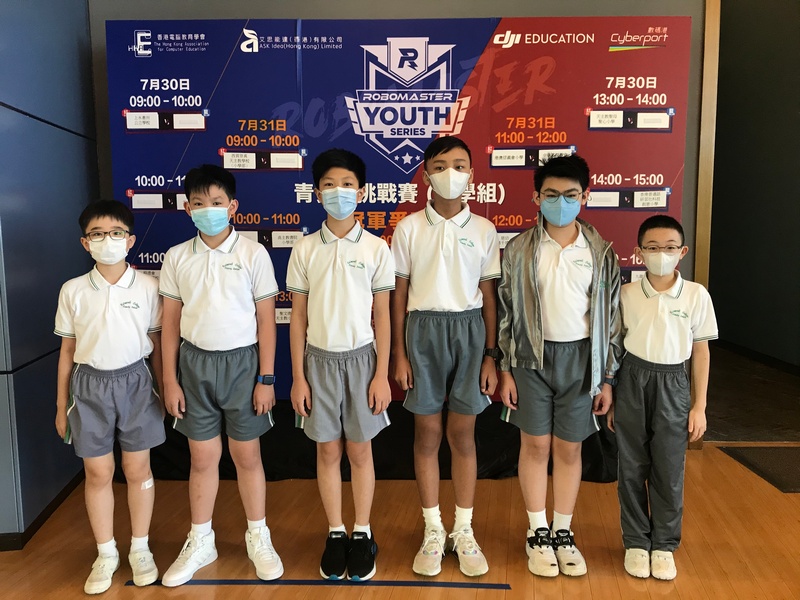General Studies
Curriculum of GS
1. Curriculum Aims
The GS curriculum aims to enable students to:
– maintain healthy personal development and become confident, rational and responsible citizens;
– recognize their roles and responsibilities as members of the family and society and show concern for the common good;
– develop a sense of national identity and be committed to contributing to the nation and the world;
– develop curiosity and interest in the natural world and technological world as well as understand the impact of science and technology on society;
– develop care and concern for the environment and practice green living.
2. Learning Targets
Students are expected to:
– understand their growth and development, develop a healthy lifestyle and respect for themselves and others, and attach importance to harmonious interpersonal relationships;
– understand the development and changes of the community, and appreciate and respect multiculturalism of Hong Kong;
– develop care and concern for the well-being of their families, the community of Hong Kong, the nation and the world, and as a result understand their roles and responsibilities in their families, society and country, respect the rule of law and contribute for the common good;
– develop interest in exploring the scientific world and technological world, be able to integrate and apply science and technology knowledge and skills to solve everyday problems;
– understand the impact of science and technology on human society and the environment, and practise green living.
- Strands
There are six strands in the GS curriculum, which provide students with diversified learning experiences that lay a solid foundation for their learning. The six strands are:
- Health and Living
- People and Environment
- Science and Technology in Everyday Life
- Community and Citizenship
- National Identity and Chinese Culture
- Global Understanding and Information Era
4. Strengths
- About 80% of the lessons are conducted in English. Students are well-prepared for learning in secondary school adopting English as the medium of instructions.
- General Studies Room was established in 2008. Students have a better environment for group work, experiments and STEM activities. It provides students with opportunities of hands-on and minds-on learning activities in order to foster learning.
5. Life-wide Learning
Life-wide learning provides students with the opportunities to learn in authentic contexts. Diversified life-wide learning activities are organized to deepen students’ learning as well as develop in them positive values and attitudes, through observation, experimental learning, sharing and reflection.
6. STEM Education
Through integration and application of knowledge and skills of the key learning areas of Science, Technology and Mathematics Education, students would realise that the development of science, technology and mathematics is closely related to the societal environment and that the advancement in science and technology could help improve the quality of life. The experiences of integrating and applying knowledge and skills to solve authentic problems and make inventions would help the development of positive values and attitudes among students as part of whole-person development.
7. Project Learning
Project learning is a powerful learning and teaching strategy to promote self-directed learning. It usually starts with challenging questions or problems, and involves students in planning, reading and making decisions over a period of time. It enables students to connect their knowledge, skills, values and attitudes, so as to construct knowledge through a variety of activities. Instead of relying on textbooks, project learning provides an alternative learning experience by using a range of learning materials obtained through various channels. It allows students to construct their own knowledge. After the whole learning process, students have to come to a conclusion and reflect on the whole project. Students can share their learning products, improve their presentation skills and self-confidence. This can be done in a variety of forms such as written report, oral presentation, broadcasting or drama.
8. Gifted Education
Creative Science(Primary 5-6)
9. Interest Class
Young Scientists(Primary 1-4)
Robot Scientists(Primary 5-6)
10. Achievements
香港電腦教育學會、艾思能達(香港)有限公司、DJI EDUCATION主辦
ROBOMASTER 2021機甲大師青少年挑戰賽(香港站)小學組
傑出隊伍獎
- 6A 陳顥樂
- 6B 何珉匯
- 6B 洪戩浧
- 6C 木下明俊
- 6D 吳柏賢
- 6D 曾栢曜

學習資源:
1. 常識教育網<學生園地>
2. 衞生署中央健康教育組
3. 食物環境衞生署
4. 能源效益
5. 香港公共博物館
6. 香港旅遊發展局
https://www.discoverhongkong.com
7. 香港天文台
8. 香港天文學會
9. 世界自然(香港)基金會
10. 燦爛的中國文明
11. 英國大英博物館 British Museum(提供館藏 3D 模型,可以 360 度線 上觀看歷史文物)
https://sketchfab.com/britishmuseum
12. 法國羅浮宮 Musée du Louvre
https://www.louvre.fr/en/visites-en-ligne
13. 美國大都會博物館 The Metropolitan Museum of Art
https://www.metmuseum.org/exhibitions/currentexhibitions#!?page=1&location=main%7Cbreuer%7Ccloisters
14. 俄羅斯艾爾米塔什博物館 The State Hermitage Museum




















